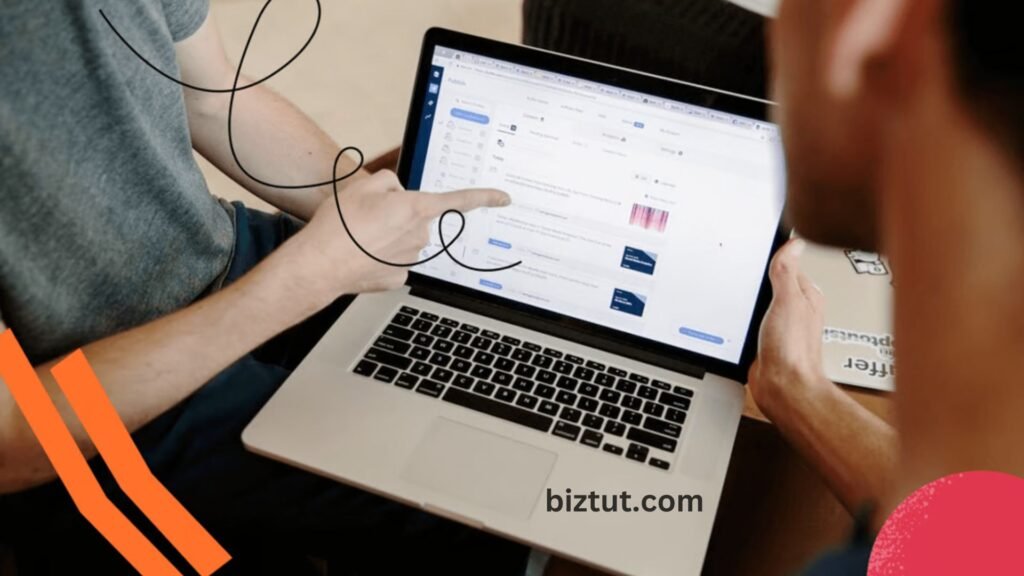Imagine you’re on an adventure to find and photograph the rare mountain gorilla. Suddenly, a group of them shows up! Do you run straight toward them, shouting with excitement? Maybe you toss them their favorite snacks? Or perhaps you should just ignore them completely. This situation is similar to what social media marketers deal with when trying to win over the tricky and sometimes shy creature that is social media engagement.
Like gorillas, social media engagement can be incredibly powerful. But depending on the setting, it can also be hard to find, with marketers everywhere trying different tricks to attract it.
If marketing is a jungle and engagement is an endangered species, consider us your trusty guide through the wild (British accent optional).
Today, we’ll share the strategies that successful marketers have used to nurture, grow, and boost social media engagement in its natural habitat.
What is engagement on social media?
Social media engagement measures how people interact with your content on social media. The most common types of engagement are likes, comments, and shares.

But those aren’t the only metrics that matter! Here are some other ways to measure social media engagement:
- Shares or retweets
- Comments
- Likes
- Growth in followers and audience
- Click-throughs
- Mentions (whether tagged or not)
- Use of branded hashtags
To really get a good grasp of what social media engagement means, let’s dive deeper into these engagement metrics.
Why does engagement matter?
Why is having a social media engagement strategy so important? Well, first off, you want your audience to cheer for the show you’re putting on. If you’re only hearing crickets, that’s a sign something’s off. But high engagement means more than just feeling good about yourself.
When your engagement rates are up, it shows you’re connecting with your audience. This means people are spending time with your content, which benefits both you and the social media platforms.
Platforms like TikTok want users to stick around as long as possible. High engagement tells the TikTok algorithm that you’re creating great content, so they’ll boost your reach. You get more eyes on your posts, and the platform keeps users engaged. It’s a win-win situation for everyone!
On the flip side, if your content doesn’t land well, it might be tempting to blame the algorithm. But more often than not, it just means your post didn’t resonate with your audience. So take it as a learning opportunity and keep moving forward!
When you know what your social media engagement metrics really mean, you can tweak your marketing strategy to better fit what your target audience likes, wants, and expects.
Take the Hootsuite post below, for example—it has over 200 comments and is still going strong. We tapped into social media managers’ worries about the Threads app launch, and that’s a topic our audience cares about a lot.
Keeping social media engagement metrics in mind when you plan your content is a smart way to grow your social media presence.
Curious about what “good” engagement looks like in your industry? Take a look at our article with average engagement rates for 13 different sectors, where you can find charts like this one!

8 tips to increase social media engagement
Now that you’re familiar with the landscape, let’s dive into the exciting dance moves that will help you boost your social media engagement rates.

Join me as we uncover eight secrets for building deeper connections in the wild world of social media!
1. Analyze Your Engagement
First things first: you need to know where you stand before you can measure your growth.
Put on your data detective hat (it looks great on you!) and check out your Hootsuite Analytics dashboard or calculate your engagement rates using the methods mentioned earlier.
Look at which posts or campaigns are performing well and which aren’t. Spot any trends? Maybe videos aren’t getting the love they used to, while “top 5” roundups are taking off.
Don’t forget to track messages, comments, and mentions! These can give you clues about what your audience wants more of or what they’re not interested in. For instance, if you’re getting the same five questions about a product, it might be time to create a post answering those!
Also, look for your brand advocates—those loyal fans who always like or comment. It could be a good idea to reach out for a collaboration!
2. Create a Specific Engagement Strategy
Next up, develop a strategy that focuses on engagement to support your goals. You don’t have to create a whole new social media plan; just add a branch dedicated to engagement.
Start by setting your engagement goals. These could include:
- Changing how people view your brand
- Generating new customer leads
- Collecting feedback on new products
- Educating your audience with helpful resources
Once you know your goals, brainstorm content that aligns with them, and incorporate it into your overall social media calendar.
Need some inspiration? Check out our article full of specific social post ideas to get your creativity flowing. Some options include:
- Giveaways
- Polls
- Stitches and duets
- Asking questions (and encouraging questions)
- Sharing user-generated content (UGC)
3. Know Your Audience
It’s tough to engage people if you don’t really know who they are.
The language, tone, and content that resonates with your audience will vary. For instance, a brand selling hot sauce with a quirky twist might appeal to a very different crowd than a luxury skincare line.
Knowing your audience will help you decide:
- What social media platforms to focus on
- When to post
- What types of content to create
- Your brand voice
4. Create and Share Valuable Content
Content that genuinely helps your audience and addresses their needs is key. Think “conversation” instead of “broadcast.” Offering what your audience wants before they even ask is how you reel in that engagement.
People are more interested in how your brand can help them than in how great your brand is. Are you running an unmissable sale? Does your software solve a marketer’s problem? Is your content entertaining enough to make people want to share it?
Don’t just guess what your audience wants—do your research! Use social listening tools like Hootsuite Insights to track trending topics, see where your brand gets mentioned, and understand what your competitors are up to.
This will help you stay relevant by engaging with current events and trends that connect with your brand.
You can also test your content to see what works. Observe how people react, tweak your approach, and try again.
Hootsuite Insights provides valuable information about your audience and their feelings about your brand. While it’s only available for enterprise users, it’s a powerful tool for anyone serious about social listening.
Not sure where to begin? Check out these engagement post ideas for any platform or these Facebook and Instagram-specific ideas.
Curious about your Instagram performance? Use this Instagram engagement rate calculator to measure likes, comments, and shares to see how you stack up!
5. Keep the Conversation Flowing
Engagement requires both reactive and proactive approaches to keep your audience interested.
Reactive engagement is about responding to direct messages, comments, and mentions. Proactive engagement involves sparking conversations with people who might be discussing your brand but haven’t directly messaged you.
Set up search streams on your Hootsuite dashboard to track those indirect mentions so you can keep the conversation going.
6. Show Your Human Side
People are more likely to engage with a brand when they feel there’s a real person behind it.
And there is! (Right?) So don’t hide it.
You can personalize your engagement by:
- Going beyond just retweeting and liking—start conversations with comments
- Acknowledging and answering questions
- Responding to comments with humor or warmth
- Sharing photos or videos of the people behind the brand

7. Keep Response Times Quick
With Hootsuite’s Saved Replies feature, you can pre-write responses for common questions. When an FAQ pops up, you’ll be ready with a thoughtful reply.
Quick responses can boost customer satisfaction and save your team time, allowing them to provide even more support elsewhere. You can personalize these replies, so they don’t feel like cookie-cutter responses.
You don’t even have to write them yourself! Hootsuite can suggest replies based on your previous answers, ensuring they sound human and on-brand.
Plus, Hootsuite Inbox helps you manage all your comments and DMs in one place.
8. Schedule Smarter
Posting regularly keeps your content fresh and visible. But timing is also crucial, so your posts reach the audience when they’re most active. In both nature and digital marketing, being in the right place at the right time is key.
You can’t be glued to your computer 24/7 (trust me, we’ve tried), but you can use tools like Hootsuite to help. Their mobile app allows you to plan and prep your posts in advance—no laptop needed!
A few other Hootsuite features to boost your productivity include:
- Monitoring and Listening Streams: Use streams to see all engagement from each social network in one place, rather than checking each platform separately.
- Automated Tagging and Assignments: Automatically route messages to the right department or team to optimize workflows and track engagement.
- Custom Inbox Reports: Get specific inbox analytics based on the metrics you’re tracking, and easily share or export reports for clients or stakeholders.
With these strategies, you’ll be well on your way to increasing your social media engagement and creating meaningful connections with your audience!





